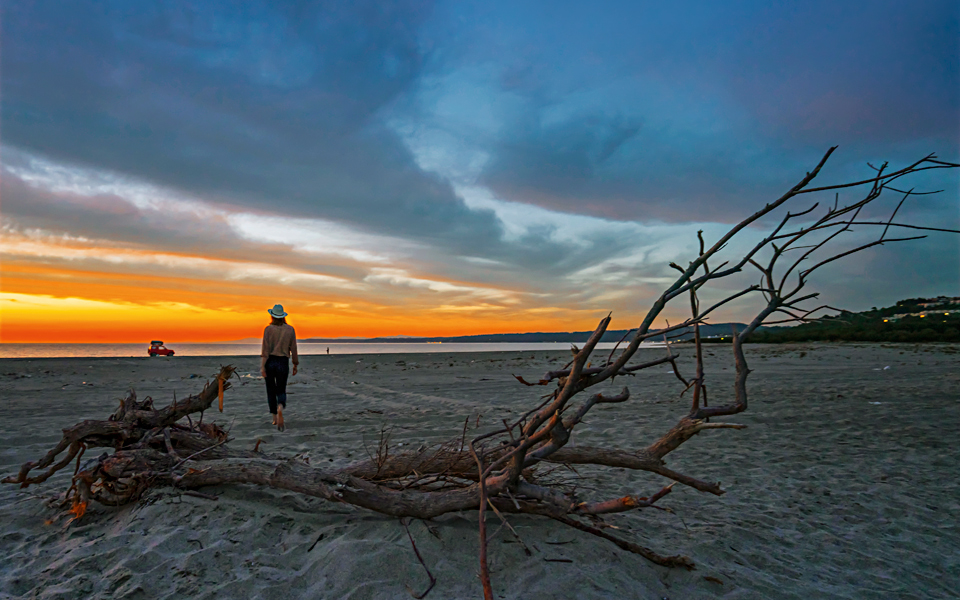Where does the northern, more cosmopolitan part of the Kassandra peninsula end? Locals say there is an imaginary line that connects Kryopigi (on the east coast) to Poseidi (on the west). When you cross it, heading south, you enter a different place. At a safe distance of 100k from Thessaloniki – far enough to keep the masses away – this southern section of the peninsula reveals some of the most beautiful spots to be found anywhere along the 522k of Halkidiki coastline. Down here, there are villages which have retained their authentic charm and their connection to the centuries-old history of the region, along with remains of ancient temples, fragrant pine forests and natural bays steeped in myths and folk legend.
“The most breathtaking sunsets in northern Greece are visible from Poseidi.”
POSEIDI: Crimson sunsets
The most breathtaking sunsets in northern Greece are visible from this spot, where the remains of ancient Mende, known throughout the Mediterranean for its wine, are still visible. Standing at the tip or “nose” of the cape near Poseidi, just past the Temple of Poseidon, you can watch the sun as it follows a rose-colored downward trajectory beginning over Pilio and ending as it disappears behind the sharp, snow-covered peak of Mount Olympus in the far distance.
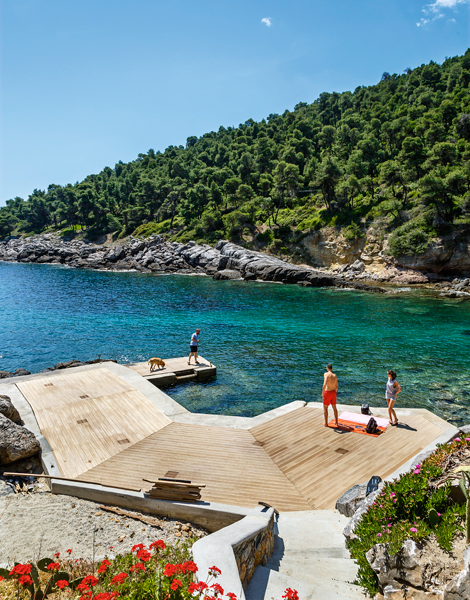
© Yadid Levy
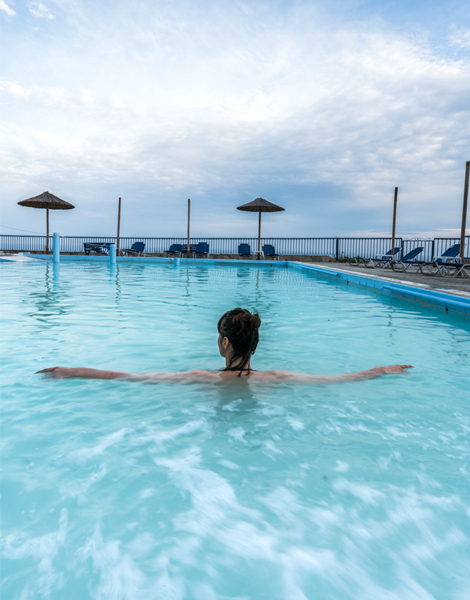
© Perikles Merakos
Paliouri: Game of Coves
A series of lovely natural bays begins just past the Xenia Coast, also known as Chroussou Bay, and continues as you head south. Next to the abandoned Xenia Hotel, a remnant of the Greek architectural boom of the 60s, is the welcoming Cabana Beach Bar. Even further south is the newly built luxury hotel Miraggio Thermal Spa Resort; the idyllic Port Valitsa, barely visible from the road; and the charming village of Paliouri, which is well-known for its abundant nature, its choice honey and its fantastic beaches. The thick pine forest and the hills scattered through the area are perfect for exploring, while the quiet beaches with trees growing down to the shore make this the ideal choice for those who want to unplug for a while and commune with nature. Quite a few of the beaches are unmarked and hard to see from the road; you’ll have to make a quick stop at the village to get directions to the best swimming spots.
Aghia Paraskevi: NATURAL SPA
Although most versions of the myth say the giant Enceladus was buried under Mt Aetna in Sicily, a local variation claims he was buried alive here on Kassandra, while fighting the Olympian gods. If anything is reminiscent of that battle, it is the thermal springs 5k south of Aghia Paraskevi, in the settlement of Loutra. The baths themselves are in a unique location; the outdoor pool hangs over the sea, and the bewitching view is probably even more therapeutic than the sulfurous waters bubbling up at a steady 39°C. Loutra’s charming harbor, very close to the thermal springs, is great for an evening stroll and a meal, especially fresh seafood. But before that, have in mind that a path that begins near to where the springs are located and runs down the sea will take you to a seaside cave. Warm sea water with healing properties wells out here. Locals claim this is the best diving spot on the peninsula.
“Although most versions of the myth say the giant Enceladus was buried under Mt Aetna in Sicily, a local variation claims he was buried alive here on Kassandra.”
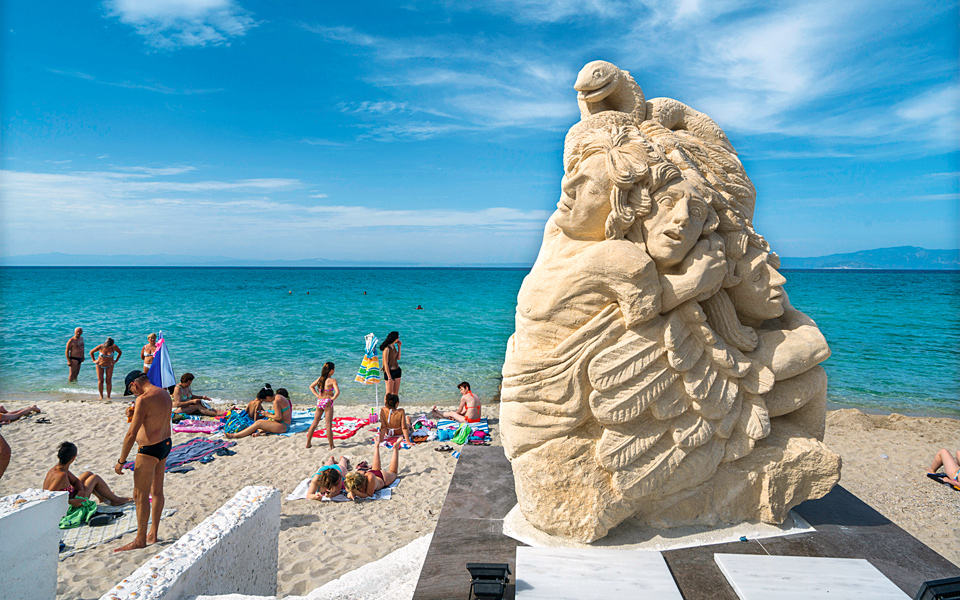
© Perikles Merakos
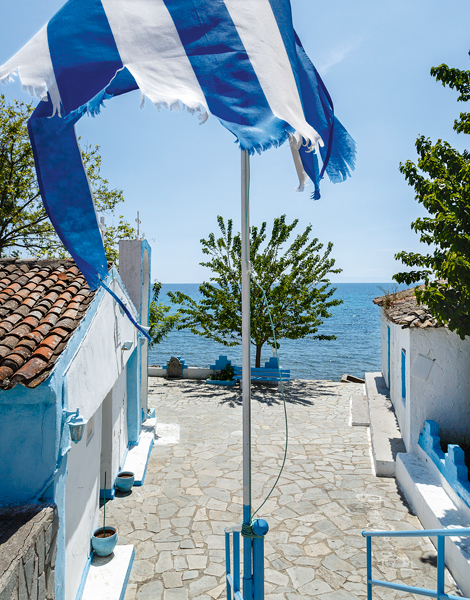
© Yadid Levy
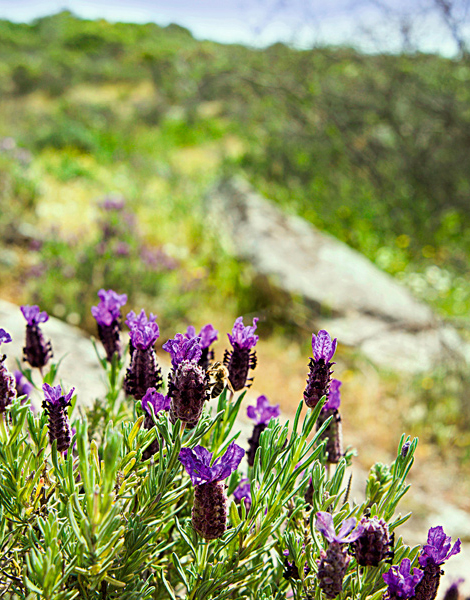
© Getty Images/IdealImages
GODS VS GIANTS
Polyhrono, Hanioti & Pefkochori, three of the most popular resorts in Halkidiki, create a short strip of tourist activity in south Kassandra. There are rooms to rent, tavernas and a colorful array of densely planted beach umbrellas. On the beach at Pefkochori, you can see the work of sculptor Paraskevas Mageiras depicting the mythical Gigantomachy, or Battle of the Giants (particularly relevant since one version of this myth designates Kassandra as the place where the gods of Olympus clashed with the Giants). Just 3k west of Polyhrono, the road leads to one of the most pristine areas of the peninsula. Lake Mavrobara, a nesting place for turtles and rare species of birds, is located here, surrounded by pine trees; it provides an ideal terrain for mountain-biking.
Nea Skioni: miraculous
The seaside chapel of Panagia Faneromeni in Nea Skioni dates back to the 16th century. There are various legends associated with its miraculous icon of the Virgin Mary, painted directly onto a large black limestone slab; according to one, the icon traveled by itself from Thessaly to Kassandra, and the locals, seeing the stone floating in the sea, recovered it and placed it here.
FOURKA: Flora Graeca
Hawthorn, wormwood, sedges, mint, centaury, oregano and thyme are some of the herbs known since antiquity for their therapeutic properties and still found today in south Kassandra. Stelios Litzerinos, a herbalist who many also call a healer, is passionate about identifying them. In the traditional village of Fourka, Stelios shows us around his lab, eager to share his knowledge and his concoctions. The room is full of rocks, shells and herbs, along with the tinctures he extracts himself.
“The seaside chapel of Panagia Faneromeni in Nea Skioni dates back to the 16th century. ”
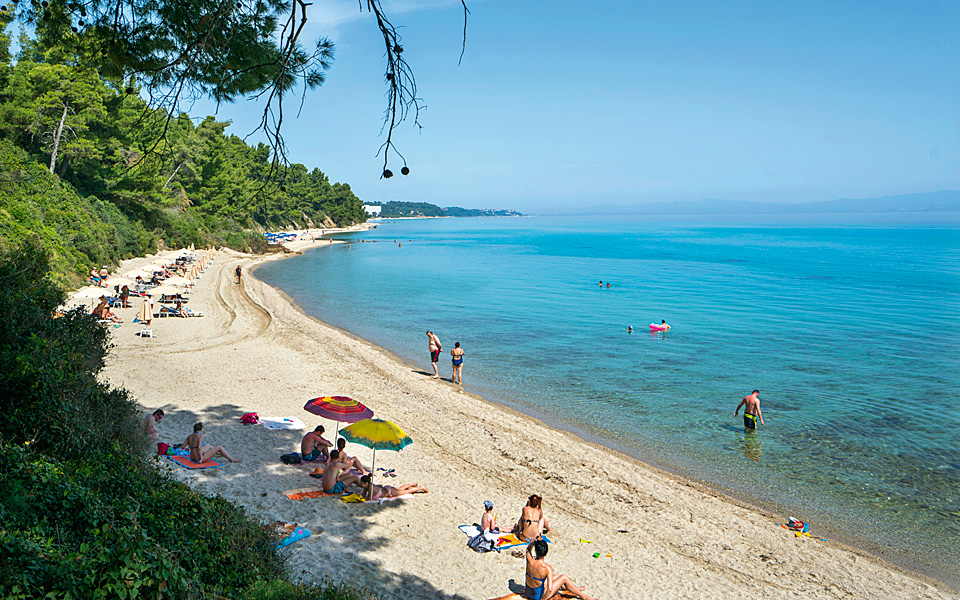
© Perikles Merakos
Kryopigi: A DAY OF LEISURE
Built on a hill incline sloping down to a beach with turquoise waters encircled by pines, Kryopigi rewards the leisurely explorer. With narrow lanes, stone-built houses and cobblestone squares, the village offers fine examples of authentic Greek architecture. At the restaurants Avli tis Anthoulas and Trizoni, you can taste the local cuisine in dishes using the best local ingredients.
Heading north out of the village, you cross that imaginary line yet again, leaving south Kassandra behind. Not to worry, though; now that you have seen what it offers, chances are you’ll be back soon.
“At the restaurants Avli tis Anthoulas and Trizoni, you can taste the local cuisine in dishes using the best local ingredients.”

